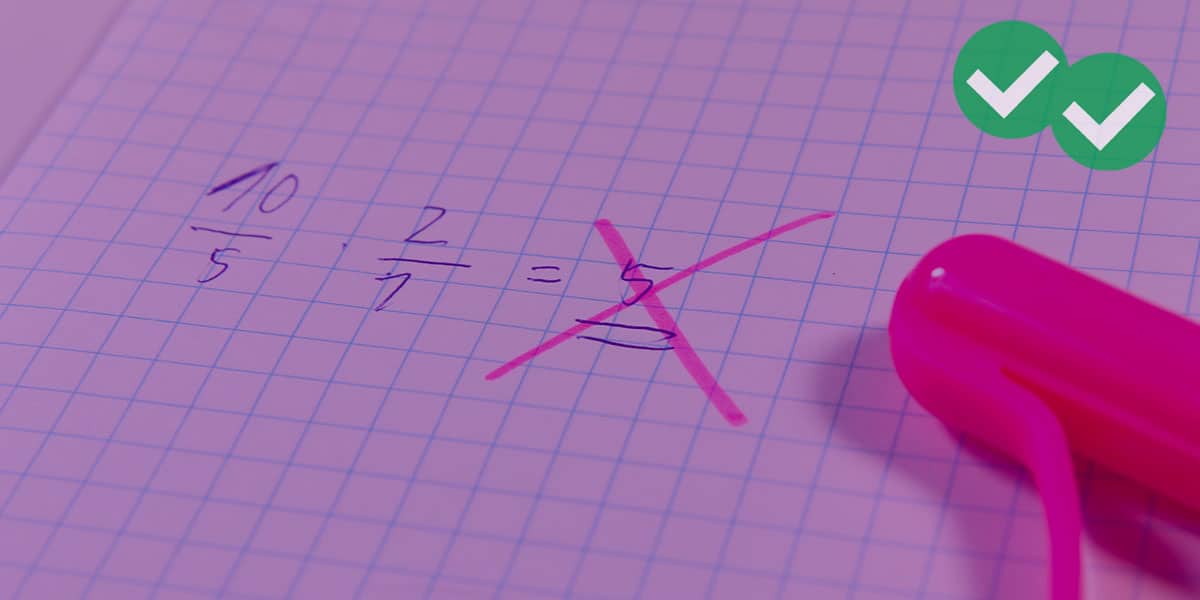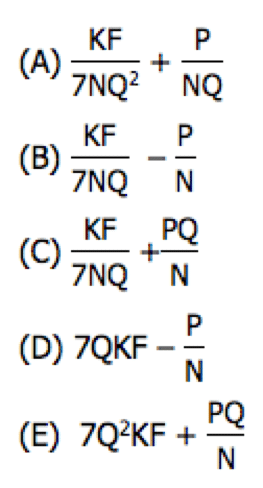Those of us who work in GMAT test prep often hear students say things such as, “I really understand the math on the GMAT, but I just make a bunch of silly mistakes” or, “Careless mistakes are my biggest problem on the GMAT Quant: how can I make fewer of them?” Let’s think about this. What exactly is a “careless mistake” or a “silly mistake”? I am going to discuss three different possibilities, all of which can play a part in the “careless mistake” issue.
Case One: Truly Silly Errors
Suppose, in the course of a calculation, you needed to calculate 2 + 4, and you said that this was 8. This is a very basic arithmetic calculation error, a truly silly mistake. We all make mistakes such as this sometimes. Every once in a while, one of my blog articles is published with such a mistake: fortunately, astute readers usually alert me in the comments. Everybody makes these mistakes, but they should be reasonably rare. If this happens more than once or twice on a 37 question section, then see Case Three. For most people, I don’t think this is the kind of “careless mistake” that causes the most difficulty.
Case Two: Levels of Understanding
The opposite of careless is careful. — Suppose a student does a math question and gets the question wrong. Then, suppose the student reads the solution, and thinks, “Oh! To get the question right, I needed to use Concept X! I know Concept X!” Getting the problem wrong was a small mistake, but at this point, some students make a HUGE mistake by thinking: “OK, that was a just a careless mistake! I really understand this!” WRONG!! WRONG!! WRONG!!
Many students, especially students who are reasonably confident in math, are very quick to jump to the conclusion, “I understand” with respect to a math concept on the GMAT. The problem with this precipitancy is that folks often don’t appreciate the subtle issue of levels of understanding. In that blog, I outline the following levels of understanding:
Level #0 = no understanding, it’s completely foreign, does not compute
Level #1 = looks familiar, “Yeah, I think I’ve seen that before,” some dim memory of how to do it, but can’t begin solving a problem
Level #2 = with a little review, or some key hints or coaching, you can solve one of these problems.
Level #3 = In the course of focused–practice, you can solve these problems consistently. If you are in the “zone” for that problem type, or if you get a crucial hint or reminder, then you can do it.
Level #4 = you can see the problem cold and, with no warm up, be able to solve it, time and time again. This happens only in diverse-problem practice.
Level #5 = you can not only solve the problem, but explain explicitly the strategy employed in solving the problem
Level #6 = you can teach the problem clearly to someone who is struggling with how to work through it, and you can answer all their questions in a way that makes complete sense to them. (The old adage among teachers: “The best way to learn something is to teach it.”)
The problem is: many folks get to Level #3, and they mistake that for full understanding. It’s true, if your understanding of a concept is at Level #3, you are in much better shape than folks at Level #1 or #2. But, on the GMAT, Level #3 understanding is not going to cut it. It’s not enough if you remember a crucial idea with a hint or only once you are “warmed up” with that particular problem type. On the real GMAT, the test will simply throw one subject after another at you. Problem #12 could be a percent problem about interest, and when you press submit, problem #13 could be about circular arcs. BAM! No warm-up, and out of the blue, you have to remember everything about this new topic. Only Level #4 understanding or higher will suffice.
When you get a question wrong, and dismiss it as a “careless mistake”, that is one way of saying, “I don’t really have anything to learn here. This problem is not demanding any additional work from me.” This is a careless attitude, an attitude of not really caring about achieving excellence. The mark of an exceptional student is: never making the same mistake twice. It’s exceptionally hard to live up to that ideal. What it means is that every single problem you get wrong lays claim on your time, attention, and effort. Every question you get wrong challenges you to know every relevant connection that much more thoroughly, so that you know it cold by the next time. It would help to force yourself to articulate, in a journal, exactly what your mistake was and exactly what you need to remember to get a problem of this sort correct the next time: forcing yourself to write it down completely, in words, would build important connections across different parts of your brain. It would be valuable to keep a precise error log of your work — if you consistently make mistakes in problems on a particular topic, then maybe it’s not so “careless”: there may be something significant about this topic that you have yet to appreciate. It can be gratifying to proclaim yourself at the “I understand” level of any topic, but getting there prematurely, without care, is loaded with pitfalls.
Case Three: Limited Attention & Focus
Some students understand math well, but the just have problems maintaining attention and focus. These are skills that need to be practiced just as much as math and verbal. Just as it wouldn’t make sense to ignore math for several month and then walk into the GMAT expecting to ace the Quant section, so it doesn’t make sense to do zero skill-building on your attention and capacity for focus, and then expect yourself to have the focus of a pro when you walk into the big test. You only get better by practicing.
Companies preparing you for the verbal & quant skills you need for standardized tests have been around since Kaplan first opened its doors in 1938. By contrast, techniques for developing and enhancing the mind’s capacity for attention and focus have been around for at least twenty-five centuries. The premier workout for one’s attention and focus is meditation: if you developed a daily meditation practice, you would notice gradually, over time, tremendous strides in these skills. Admittedly, if your test is around the corner, starting a daily meditation routine right now might not make too much of a difference: the major payoffs would be much further down the road. Mindfulness practice is similar, and, if practiced consistently throughout the day, each day, can bring significant changes more quickly. Jon Kabat-Zinn has been a pioneer in the scientific research of mindfulness, and I highly recommend his books.
Mindfulness is about focusing on whatever your present moment experience is. From the point of view of mindfulness practice, the past and future don’t matter at all. Slow down your breath and ask yourself: what is present right now? What do you see or sense? Think of the most frequent environments in your life: your residence, your friends’ residences, your office, your classroom, stores you frequent, etc. Purely from memory, without any hints, could you describe what’s on the floor? the color of the walls? how many windows? where each piece of furniture or equipment is? how many stairs? — Of all the places that are familiar, how many of them have you ever really looked at consciously, in detail? One excellent starter practice for mindfulness: each time you are in a very familiar environment, force yourself to notice one little detail that you have never consciously acknowledged before: an object, a color, a pattern, perhaps even a shaft of light or a view from a window. At first, it may seem that, after a few times, you will run out, but if you really practice this consistently, you will find even the most familiar environment is rich in an infinite level of as-yet unexplored detail.
More mindfulness practice. When you eat, just eat: focus on the flavor and sensation of each bite. When you walk, just walk: how does each step feel? When you stand waiting (at the bus stop, on an elevator, on line at the grocery, etc.), just stand: notice your posture and breath. In our modern day and age, a crucial part of mindfulness is resisting the urge to immerse your attention in some kind of electronic distraction at every spare moment. Would you rather be connected to something electronic or to your own vitality and well-being?
How does any of this help you with the GMAT? Well, by taking slower & deeper breaths and directing your attention to what is present, you are training your mind not to wander away from what’s in front of your face, and you are sharpening your eye for fine detail. If you practice this consistently, so that it starts to feel natural, then when you walk into the GMAT, it will be much harder for any niggling little detail of any math question to evade your careful eye. If your breath remains slow and deep, that will help you relax even in that high pressure situation, which in turn will give you greater access to your capacity for intuition and insight. When you are that careful in all your observations, your “careless” mistakes will be few indeed. For more tips, see Kevin’s video below!
Summary
I hope this article has given you a few different ways to think about addressing the problem of “careless mistakes.” Here’s a question on which you can practice:
1) http://gmat.magoosh.com/questions/1003
If you have any observations of your own you would like to share, or if you have any questions, feel free to leave a comment below.





